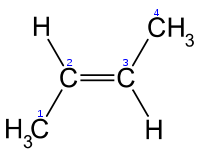Glossary
Links & Blogs | Suggested Brands | Ages & Stages | Helpful Tips | Glossary
We’ve compiled a helpful list of ingredient and food-related definitions as a general reference as what we mean when we use the following words. By following the “Food Selection Guide” link, you are taken to a table we have created as a helpful guide for choosing foods within each category. Those categories are defined below. The information from that table and most of the glossary definitions are taken from the Nourishing Traditions cookbook.
Traditional Foods: the best category to choose from. Meats from this category are fresh, pasture-raised and organic. Dairy from this category is fresh, from pasture-raised animals, organic and preferably raw and cultured. Eat a varied diet of foods from this group.
Compromise Foods: foods that healthy people should eat in moderation.
Newfangled Foods: foods that are best avoided by everyone.
Link to Food Selection Guide for a breakdown of
traditional, compromise and newfangled foods.
Specific Definitions:
Coconut Oil: contains large quantities of lauric acid, which is also found in mother’s milk. This is why coconut oil is used in baby formulas. Coconut oil is 92% saturated with over two-thirds of the saturated fat as medium-chain fatty acids and has strong anti-fungal and antimicrobial properties. It traditionally protects tropical populations from bacteria and fungus prevalent in their food supply. Coconut oil can be stored at room temperature for many months. It increases metabolism and can’t be stored as fat.
Commercially Produced: Food products, such as meat and eggs, that are raised in high density, unnatural conditions. This means that the food has not been produced in an organic manner, the animals are generally chock full of antibiotics to stop the transmission of disease in such close quarters and the animals have not been given grazing room nor access to their preferred diet.
Flax Oil: Is a great vegetarian source of omega-3’s, due to its high concentration (57%) of the substance. It should always be kept refrigerated, never heated and should be consumed in small amounts with salads and spreads.
Milk: A controversial topic no matter who you ask. Milk has gone back and forth from being the cure-all to being the cause of our problems. While milk has been consumed in various forms by various cultures for thousands of years, the mass-produced milk and milk products on sale in stores today is far different than the milk our ancestors consumed.
Pasteurization of milk, while a great advance in health safety when it was created in the 1800’s, is now being called into question by some. Pasteurization was meant to reduce the number of micro-organisms that cause disease, but recently the discovery of heat-resistant pathogens have lead researchers to develop even more sensitive procedures, overlooking that fact that in the process of pasteurization, helpful organisms (such as a lactic-acid-producing bacteria that protects against pathogens) are destroyed, the naturally occurring proteins are altered and made less available and the enzymes are all destroyed (enzymes that help the body assimilate all the nutrients in milk-including calcium). Without these good bacteria, proteins and enzymes drinking milk puts a strain on the entire digestive system, resulting in “lactose intolerance,” allergies, chronic fatigue and a host of other degenerative diseases.
Raw milk: Available in some areas, this is milk from family farms that has not been pasteurized or ultra-pasteurized. Of course, research the farm that your milk is coming from, but fresh, non-toxic, pasture-based milk, is healthy and (in our opinion) more delicious that conventional milk. Check out Real Milk for help finding a local store, or buying co-op, that carries raw milk.
Salt: Minimum nutritional requirements for children one to eighteen years of age is 225-500 mg of sodium, which can be obtained by feeding children cooked food, without adding salt.
Stock: Chicken stock and beef stock are important base ingredients. Homemade stock contains many minerals, including: calcium, magnesium, phosphorus, other trace minerals, gelatin, collagen and glycine. These minerals are all more easily assimilated by your body when consumed as a natural part of food, as opposed to supplements. A comprehensive list of the benefits of homemade stock can be found on the Kitchen Stewards website.
Sugar: Sugar (using the colloquial definition) is simply a type of carbohydrate that is good for you in some forms and bad for you in others. Refined sugar is an extremely high glycemic food, meaning it hits your bloodstream quickly and causes spikes in blood sugar. Sugar has been linked to diabetes, obesity, tooth decay and has been shown to suppress the immune system. Sugar makes your blood more acidic which makes your body more vulnerable to toxins, bacteria, viruses and yeast infections. There is technically no recommended daily allowance for sugar. Most artificial sweeteners have now been shown to have unintended negative effects. A comprehensive table can be found here.
Bad Sugars: high-fructose corn syrup, fruit-juice concentrate, lactose, maltose, sucrose, glucose, dextrose, evaporated cane juice, barley malt, diastatic malt, ethyl maltol, maltodextrin, confectioners (powdered) sugar, turbinado sugar, aspartame, saccharin, sucralose and more!
Good sugars: honey, molasses, agave nectar, Stevia (use for babies over 1 year only)
Tropical Oils: are more saturated than other vegetable oils. See the Coconut Oil definition for more information.
Egg Yolk: Rich in choline, cholesterol, and other brain nourishing substances
Organic Food: Food that is made in a way that limits synthetic materials during production. Higher in nutrients and flavor than conventionally grown food.
Liver: Contains Vitamin A, which assists other vitamins and minerals to be utilized by the body, Vitamin D, which helps create strong bones, healthy teeth and proper development, Vitamin K, which helps bone development, and is rich in Iron.
Cod Liver Oil: Provides fat-soluble vitamins A & D. Use an eyedropper to give to infants. Compliments High Vitamin Butter Oil benefits.
Hi Vitamin Butter Oil: Deep yellow butter from cows feeding on rapidly growing green grass in the spring and fall. Supplies Vitamin A & D along with the X Factor. Compliments Cod Liver Oil benefits.
Pasture-Raised: These animals that are raised in pastures with full access to the sun, provide an essential source of Vitamin D.
Soaking Foods: The process of soaking oats, fruits and vegetables in whey or yogurt with water is called lacto-fermentation. This process helps to better digest food and increases vitamin levels in order to obtain optimal nutrition. Soaking nuts and beans in water and salt also assists in the digestibility and increases vitamin levels of foods.
Blackstrap Molasses: High in Iron and Calcium. Since you want to avoid honey until after one year, you can use blackstrap molasses as a substitute.
Expanded Definitions:
Fat: A class of organic substances that don’t dissolve in water. The difference between all the fats (saturated, unsaturated, etc) is how the carbon and hydrogen atoms are arranged and the length of the chain. All fats are made up of a combination of saturated and unsaturated molecules (chart of the breakdowns here). Fats slow down nutrient absorption so that we feel fuller longer (which is why people on low-fat diets never feel satisfied). Fat is also crucial for the absorption of certain fat-soluble vitamins such as A, D, E and K.
Saturated: Chemically it’s when all the carbon bonds are occupied by a hydrogen atom. Saturated fat is highly stable, not prone to go rancid even when cooked with. They are straight molecules, so they pack together easily and are therefore solid or semi-solid at room temperature. Saturated fats are found mostly in animal fats and tropical oils (examples: butter, coconut oil and lard) and your body makes them from carbohydrates.
Unsaturated: Chemically when there is at least one double bond in the chain of carbons, making a bent molecule.
Monounsaturated: A fat molecule that contains one double carbon bond. Naturally found in nuts, avocados, tea seed oil, olive oil, oatmeal and whole grain wheat.
Polyunsaturated: A fat molecule that contains more than one double bond. Naturally found in nuts, cheese, fish, algae, leaf greens, whole grain wheat, peanut butter and krill.
Trans-fats vs Cis-fats: Trans-fats and cis-fats can be either mono- or poly-unsaturated. The difference is in the geometry of the molecule.
Cis-fats have both the carbons on the same side of the double-bond, which means that they don’t stack easily and generally stay liquid. This geometry occurs naturally. Trans-fats, on the other hand, rarely occur naturally and because of their molecular geometry trans-fats can mimic saturated fats and become solid at room temperature.
Trans-fats are generally the product of hydrogenation, which turns cis-fats (fats with at least one double bond) into partially or completely saturated fats (no double bonds). This is done to extend shelf life and make them more useful for cooking and baking. The problem arises when the saturation is partial, which creates the trans-fat. Examples of unnaturally solid trans-fats: vegetable shortening (Crisco) and margarine.
Trans-fats do occur naturally, but only in the milk and body fat of cattle and sheep and only in the polyunsaturated form that includes a cis-bond as well. Worldwide trans-fats have been acknowledged as unessential for human health.
 chemical structure of a trans bond
chemical structure of a trans bond
 chemical structure of a cis bond
chemical structure of a cis bond